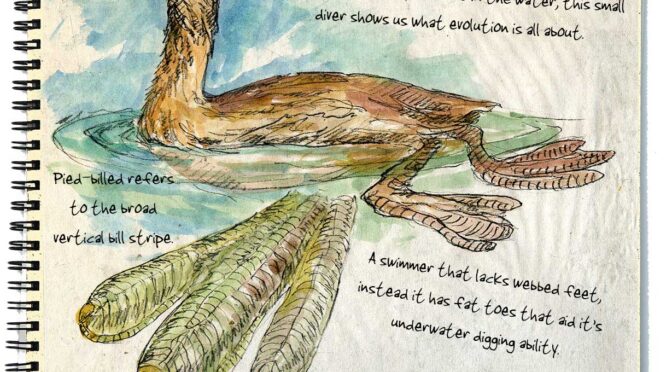A winter’s walk around the marina and there, all by itself, was a pied-billed grebe. Diving, floating a moment, diving, floating. These birds are here until spring, so take a walk and have a look for them yourself. About the size of a man’s shoe, these diving birds nest in eastern Washington and British Columbia’s prairie lakes. After that, they are solitary for the rest of the year and many come to visit us in winter. Others head south for warmer lakes and coastal bays. When I first found out about them, I thought the ‘pied-billed’ name referenced something to do with the bill the shape of a piece of pie, but it’s not, this is an original old-English name for stripe – the vertical bill-stripe seen during breeding season.
This critter is proof that all birds have certainly not been created equal. Many have evolved traits that work together for success. These grebes don’t fly very well, notice there isn’t even a tail to steer with. The legs are so far back on the body it can’t walk on dry land but instead sort of helps scooch them up on shore to nest. But those two evolutionary changes happened because of its other abilities. A chicken-like bill, tall and short, gives them an advantage in cracking crab shells or crunching down on large crustaceans. It dives instead of flies to escape danger, and is completely at home underwater where it uses those huge feet and legs for easy propulsion. While there are many ducks with the same features, these birds gain the ability to dig out crabs and invertebrates underwater. A rare bird indeed.
Larry Eifert paints and sails the Pacific Northwest from Port Townsend. His large-scale murals can be seen in many national parks across America, and at larryeifert.com.

